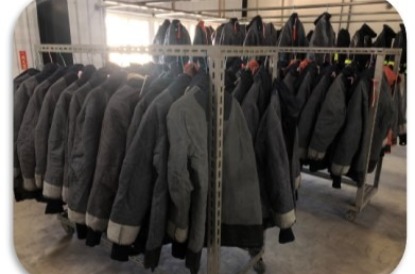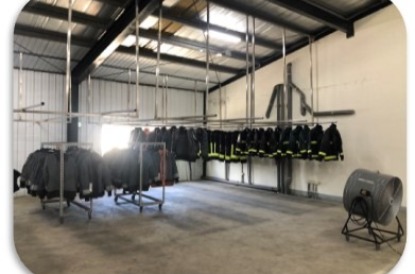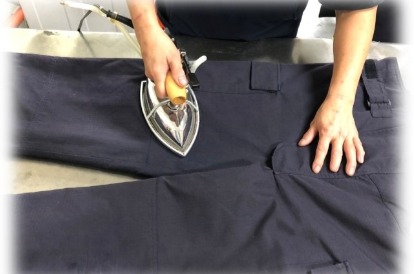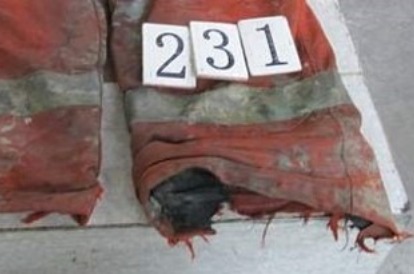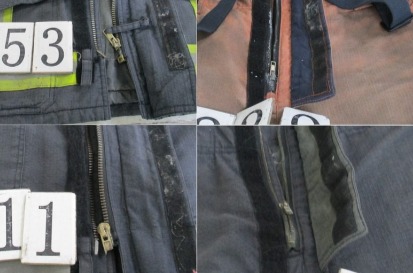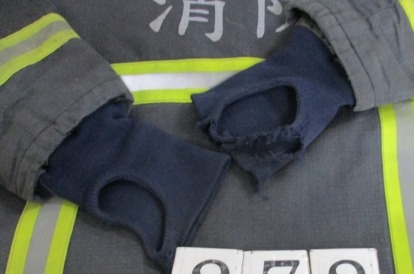Correct care of firefighting suits
Correct care of firefighting suits
- Visual Inspection: Conduct a thorough visual inspection, look for signs of damage, wear, or contamination, including cuts, tears, abrasions, burns, or chemical residues.
- Hardware Inspection: Check all hardware components, such as buckles, straps, and zippers, for proper functionality. Ensure they are securely fastened and in good condition.
- Reflective Trim: Examine the reflective trim for any signs of damage, peeling, or fading. Properly functioning reflective trim is crucial for visibility in low-light conditions.
- Seams and Stitching: Inspect seams and stitching for loose threads, fraying, or separation. Pay special attention to high-stress areas where damage is more likely to occur.
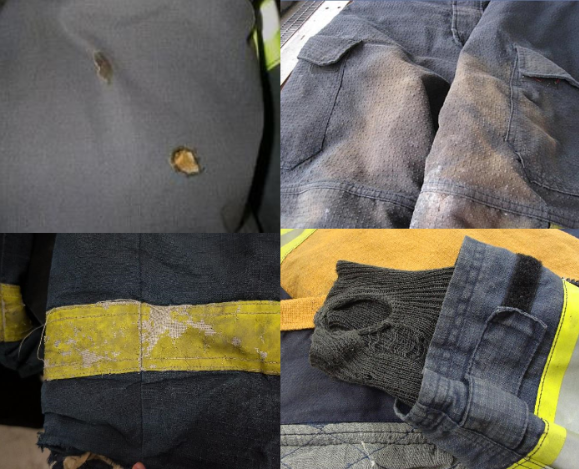
Advanced Inspection:
Conduct inspection twice a year or whenever routine inspections indicate that a problem may exist.
- Moisture barrier and seam sealing integrity
- Fit and jackets/pants overlap
- Seam integrity including broken or missing stitches
- Loss or shifting of thermal liner material
- Wristlet integrity and functionality
- Reflective trim and Velcro integrity, attachment and functionality
- Liner attachment systemsClosure system functionality
- Material integrity for loss of strength due to UV or chemical exposure MORE
Cleaning: After each use, clean the firefighting suit to remove contaminants, soot, and other debris.
Firefighter protective clothing must be kept clean to ensure its optimal performance. Contaminated suit carries less insulation, is more likely to conduct heat and electricity, lacks liquid shedding properties and can become potentially flammable. Moreover, many fireground contaminants are carcinogens and skin toxic chemicals. Cleaning suits after each use helps prevent cross-contamination. Firefighting suit needs to be cleaned regularly to prevent these problems. Yet, improper cleaning can also destroy clothing or worsen its protective performance.
Routine Cleaning: Perform the followings after each use:
- Remove Loose Debris: Brush off or gently shake the gear to remove loose debris.
- Pre-Rinse with water: Use a hose or gentle stream of water to pre-rinse the suit to remove surface contaminants. Or drain and refill water from sink repeatedly until the suit is rinsed when cleaning in a utility sink.
- Wash: Scrub gently the stained area with soft bristle brush (avoid knitted cuffs, reflective strips and liner).
- Rinse: Thoroughly rinse the suit to remove contaminated residue.
- Soaking: Soak the suit with detergent and water for 30 to 60 minutes. Do not soak for too long to prevent reverse contamination.
- Hand Wash: Complete the whole process of Routine Cleaning.
- Machine Wash:
- Prewash the machine to prevent cross contamination.
- Don’t overload the machine.
- Fasten all closures, including pocket closures, hook and loop, snaps, zippers and hooks.
- Turn garment inside out and place in a mesh laundry bag.
- Tumble washing machine with low rotate speed and temperature 40° C/ 104° F is recommended.
*PRECAUTION*
- Use detergent which PH value between 6.0~10.5 only.
- Do notshare washing machine with other clothing (non-firefighting clothing) to avoidcross-contamination.
- Donot use dry cleaning as the ingredients of dry-cleaning solvent may damage the FRfibers.
- Wearprotective gloves & eye/face splash protection when cleaning.
Drying: Drying suits thoroughly after each use is essential not only for comfort but also for maintaining its performance
Hang to Air Dry:
- Hang the firefighting suit in awell-ventilated area to air dry. The suits should be hung in a way that allowsair to circulate around it fully. A fan could be used to speed up the drying process.
- Avoid hanging it in direct sunlight, asprolonged exposure to UV rays can degrade the FR fabrics over time.
Open All Closures:
Check for Proper Drying:
Periodically check the suits to ensure that it is drying properly. Depending on humidity levels and airflow, it may take some time for the gear to dry completely.
Rotate and Rehang if Necessary:
If you notice that certain areas of the gear are drying more slowly than others, consider rotating or repositioning it on the hanger to ensure even drying.
Avoid Wrinkling:
Try to avoid allowing the gear to become excessively wrinkled during drying. This can help maintain the suit's integrity and appearance. Ironing after drying can effectively help restore water-repellent properties after washing.
Machine Drying:
- Do not overload capacity of machine; use “no heat” or “air dry only” option.
- Temperature should not exceed 40° C/ 104° F.
Storage:
- Before storing firefighting PPE, your garments should be clean and dry, avoiding contact with contaminants.
- The storage areas must be well ventilated, with no exposure to harsh lighting, fluorescent lighting, direct or indirect sunlight and moisture.
- Suits should not be stored at temperatures below -32° C (-25° F) or above 82° C (180° F).
Repairs: If significant damage is identified during regular or advance inspection, such as tears, punctures, or delamination, it's essential to address it promptly. Repairs should be conducted by a certified professional or the suit's original manufacturer to ensure compliance with safety standards such as EN469 or NFPA.
Retirement and Recycling
Retirement:
- Firefighting suit has a limited lifespan. Follow the manufacturer's recommendations regarding when suit should be retired or replaced due to age or excessive wear.
- Monitor the age and overall condition of the suit. Manufacturers typically provide guidelines on the recommended lifespan of turnout gear.
- Consider replacing suit that has reached the end of its usable life or has sustained extensive damage that cannot be repaired effectively.
Recycle: Proper recycling procedures can help extend the useful life of materials, reduce waste, and minimize environmental impact.
Dismantle and Separate Materials:
Firefighting suit is typically made up of multiple layers, including an outer shell, moisture barrier, thermal liner, reflective trim, and various hardware. Carefully dismantle the gear to separate these components.
Dispose of Non-Recyclable Components:
Some components of firefighting suit, such as the moisture barrier and thermal liner, may not be easily recyclable. In such cases, follow local regulations for the disposal of these materials.
Donate or Repurpose:
If the gear is still in good condition but no longer suitable for firefighting use, consider donating it to organizations, training programs, or individuals who can use it for non-emergency purposes. Repurposing suit for other applications can extend its useful life.


